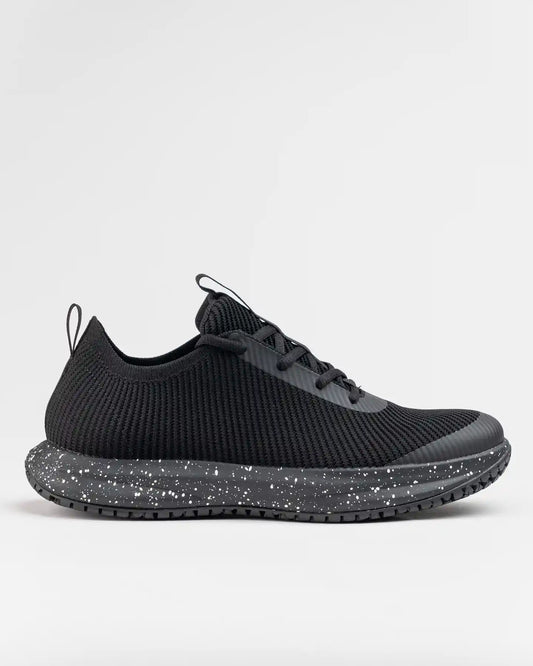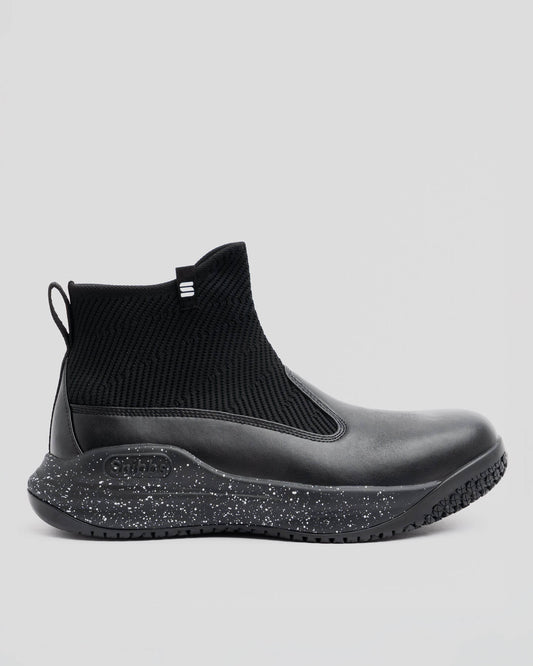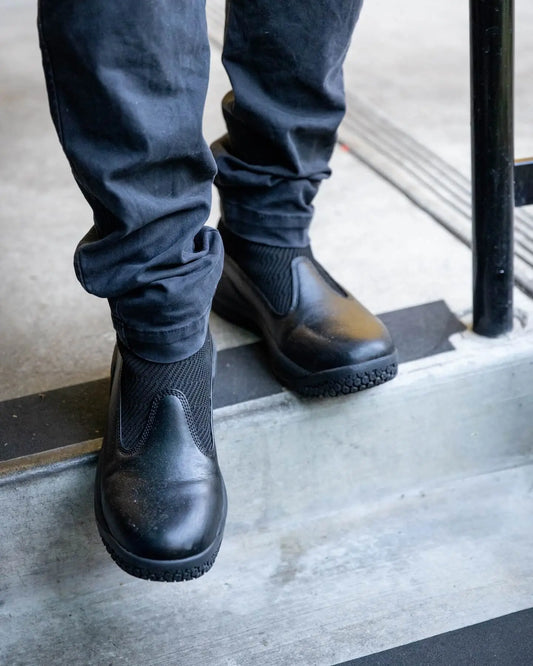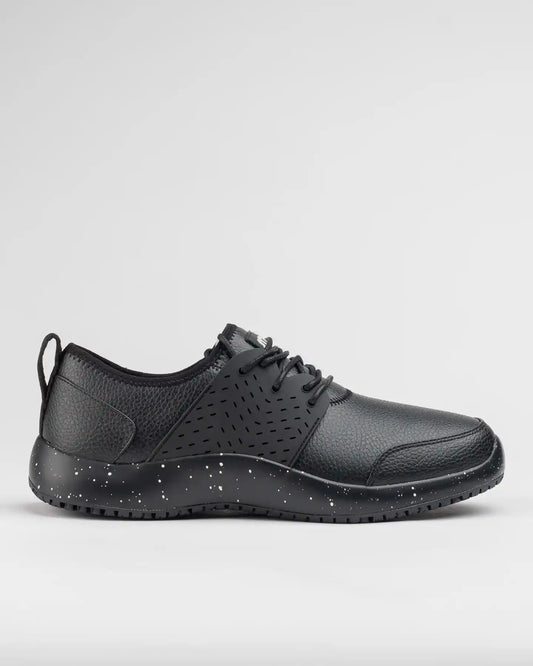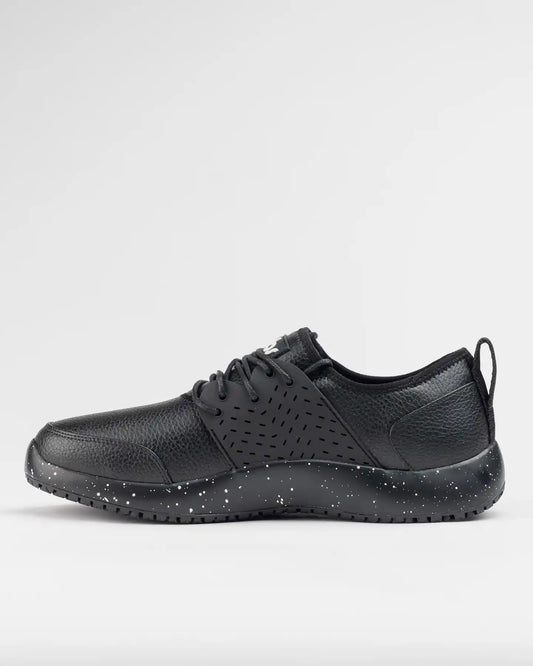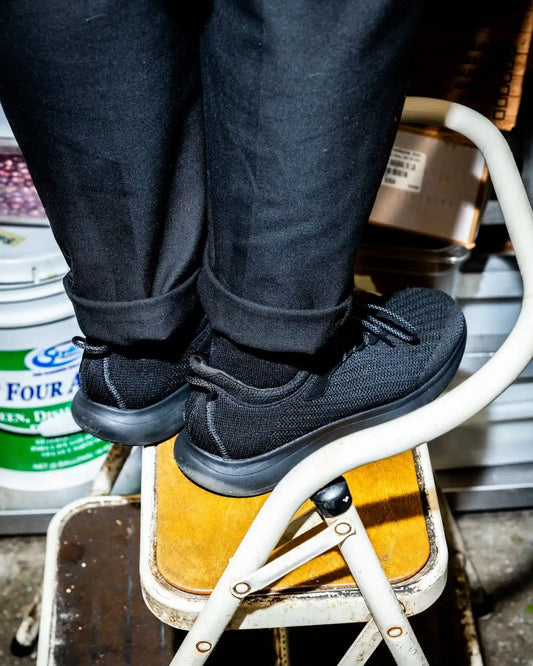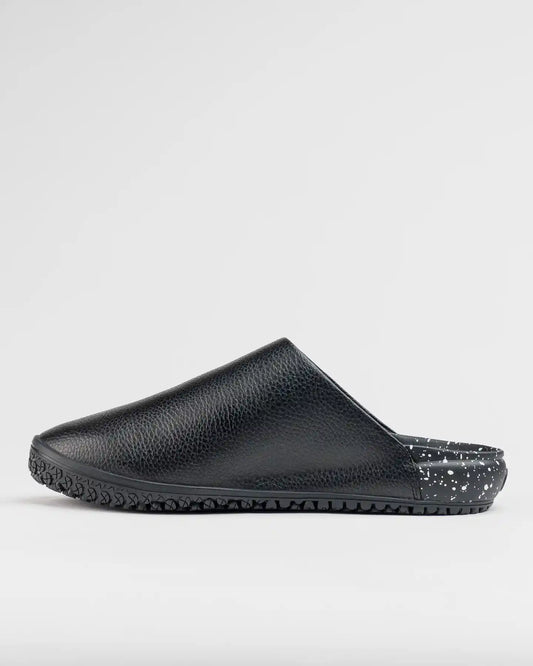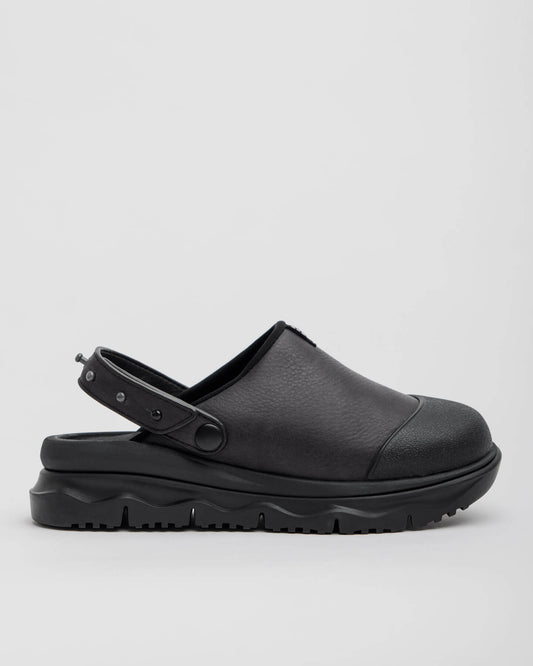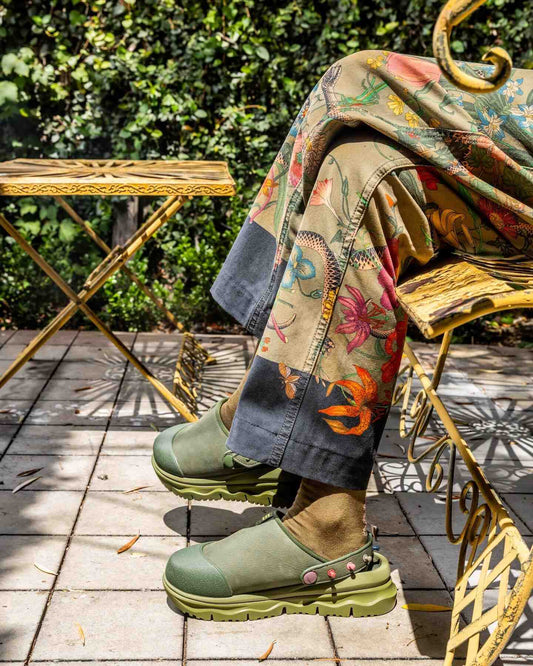Why Do Nurses Wear Compression Socks?
Alex Kinejara
Compression socks have long been recommended by healthcare professionals to help fight circulatory concerns in their patients. But why, in some cases, are healthcare workers adopting this snug footwear staple for themselves?
Beating out teachers, restaurant servers, and hairdressers, nurses are by far the most common upright professionals in the US.1 And because our frontline healthcare workers are required to stand and sit for prolonged periods, many nurses take preventative measures to promote circulation by tapping into the benefits of compression socks for nurses.
At the end of the day, nurses devote most of their time to caring for others, and it’s vital they’re proactive on their own wellness to sustain the demands of the job. Here, we’ll consider why nurses wear compression socks, the science-backed benefits they offer, and how this super-power sock could have a positive impact on your working life and well-being.
How Do Compression Socks Work?
Whether you caught a glimpse of them on fellow colleagues or you’ve seen them on patients recovering from circulatory concerns, you’ve probably seen compression socks during your time working in healthcare. However, how do these accessories work in tandem with work shoes for nurses?
Compression socks are a kind of sock that fit tightly over the ankles and calves to boost circulation. By applying pressure to veins in the lower leg, they help blood move back up to the heart. This supports both arms of the circulatory system, including:2
- Cardiovascular function – As the system that regulates oxygen flow, the cardiovascular system is essential for all bodily functions. Blood that’s been oxygenated moves out through your veins, and your veins send deoxygenated blood back toward the heart for replenishment. Your body recirculates all of its blood about three times per minute.3
- Lymphatic fluid and function – The network of passageways comprising the lymphatic system drains excess fluid (plasma) in our blood and tissues. Plasma often carries essential nutrients, immune cells, blood cells, and waste through your body to be either reabsorbed or expelled.2 To do so, it must often oppose blood flow to move plasma through the body.
While the veins around our upper body tend to be more robust, those that extend to your extremities can often be the thinnest and weakest channels for blood to move through. By squeezing the lower legs, compression socks provide circulatory reinforcement that many people can’t achieve on their own.
Why Should Healthcare Workers Wear Compression Socks?
Some studies estimate that 40% of the U.S. population suffers from sub-optimal circulation—veins that fail to pump enough blood back to the heart consistently.1 For this reason, healthcare workers (and other professionals who sit and stand excessively) are at greater risk of poor circulation sheerly due to the daily demands of their job.
The U.S. Center for Disease Control and Prevention (CDC) indicates that standing for more than 8 hours a day poses significant health risks, all related to circulation.4 Fortis University, a vocational school for health care, notes that healthcare professionals in average-sized hospitals work 12-hour shifts weekly or five 8-hour shifts, though this excludes those who work overtime hours for better pay.5
As hospitals’ frontline workers, nurses are constantly rushing from patient to patient, standing on their feet for prolonged periods. Compression support socks are an affordable intervention that can help workers passively prioritize their health without limiting their ability to work.
Risks of Prolonged Standing
Maintaining any one position for an extended time can adversely affect body function. The CDC identifies five main health risks associated with standing for extended intervals:
Benefits of Compression Socks
The activities nurses perform every day—whether standing for prolonged periods in the operating room or spending long hours on patient data entry in front of a computer—can prevent circulation from conducting at the optimal pace.
Compression socks function as a kind of external pump system, giving your circulatory system an extra “leg up” when it’s under excessive stress. Used regularly, the positive effects of wearing compression socks may include:8
- Increased blood flow
- Limited blood pooling
- Lower risk of blood clots
- Symptom relief for circulatory medical diagnosis
How Long Should a Nurse Wear Compression Socks?
The length of time you should keep your compression socks on depends on your current state of health, as well as recommendations from your healthcare provider. For example, Peace Health suggests that compression support socks can be used 24/7 (excluding time spent bathing), while Harvard Medical School recommends removing compression socks at night.9,10,
If you have any health-related concerns, you may want to consult a doctor to review how compression socks could affect your circulation and your skin sensitivity. But regardless of how long you wear them, healthcare professionals recommend replacing your socks every 3 to 6 months can ensure the items remain fitted to your leg.11 A good rule of thumb is to dispose of socks once they lose their stretch.
Should All Nurses Wear Compression Socks?
If compression socks increase comfort and have positive effects on energy levels, many nurses may find them tremendously beneficial to their workflow and overall quality of life.
That said, some individuals may stand to gain even more from compression socks than others. Compression garments can be particularly advantageous if:
Guidelines published by The Association for Perioperative Registered Nurses (AORN) recommend that caregivers should not stand for more than two hours continuously without interventions.
However, the demands of modern healthcare can make this benchmark unattainable for many nurses—so if you find yourself unable to meet these standards, compression socks can be a valuable addition to your workday routine.16 Plus, with modern, stylish, go-with-everything options to complement your scrubs and on-the-floor footwear, today’s compression socks keep your legs snug and safe without skimping style. For more style tips, learn how to wear scrubs with compression socks
Stand Tall in Style with Snibbs
Even essential workers need ground support, and Snibbs compression socks help you care for your body while you pour your energy toward caring for others.
Our easy-on, easy-off compression socks are designed to carry you through each long shift comfortable, energized, and ready to make a positive impact, with moisture-wicking textiles that keep you comfortable while leaving skin irritation in the dust. To go the extra mile for your health, pair your compression socks with supportive slip-resistant work shoes to help your feet stay stable and relaxed on the go.
At Snibbs, we know how important it is to spread love and put others first. That’s why we focus on creating solutions for professionals who are generous with their time and committed to a healthy future. Trust Snibbs to help keep your body on track without slowing you down.
Sources:
- Georgetown Nursing. Sitting or Standing: Tips for Treating Your Body Well At Work. https://online.nursing.geoGergetown.edu/blog/sitting-or-standing-youre-at-risk/
- Circulation Research. Lymphatic System in Cardiovascular Medicine. https://www.ahajournals.org/doi/10.1161/CIRCRESAHA.115.306544
- PBS. Amazon Heart Facts. https://www.pbs.org/wgbh/nova/heart/heartfacts.html
- CDC. Prolonged Standing at Work. https://blogs.cdc.gov/niosh-science-blog/2014/12/09/standing/
- Fortis University. Nursing Hours: How Long Do Nurses Work? https://www.fortis.edu/blog/nursing/nursing-hours-how-long-do-nurses-work.html
- Johns Hopkins Medicine. Varicose Veins. https://www.hopkinsmedicine.org/health/conditions-and-diseases/varicose-veins
- Rehabilitation Nursing. Evidence of Health Risks Associated with Prolonged Standing at Work and Intervention Effectiveness. https://www.ncbi.nlm.nih.gov/pmc/articles/PMC4591921/
- Cleveland Clinic. What You Should Know About Compression Socks. https://health.clevelandclinic.org/what-you-should-know-about-compression-socks/
- Peace Health. Compression Socks: How to Use Them. https://www.peacehealth.org/medical-topics/id/tn8048
- Harvard Health. Compression stockings after deep-vein thrombosis: Knee-highs or thigh-highs? https://www.health.harvard.edu/diseases-and-conditions/compression-stockings-after-deep-vein-thrombosis-knee-highs-or-thigh-highs
- Mount Sinai Hospital. Compression Stockings Information. https://www.mountsinai.org/health-library/selfcare-instructions/compression-stockings
- Dynamic Medecine. The effects of aging and activity on muscle blood flow. https://www.ncbi.nlm.nih.gov/pmc/articles/PMC150384/
- Cureus. Prevalence of Varicose Veins Among Nurses in Different Departments in Jazan Public Hospitals, Saudi Arabia: A Cross-Sectional Study. https://www.ncbi.nlm.nih.gov/pmc/articles/PMC9131706/
- U.S. Census Bureau. Women Hold 76% of All Healthcare Jobs, Gaining in Higher-Paying Occupations. https://www.census.gov/library/stories/2019/08/your-health-care-in-womens-hands.html
- Cleveland Clinic. Poor Circulation: Symptoms, Causes, and Treatment. https://my.clevelandclinic.org/health/diseases/21882-poor-circulation
- AORN. Introduction to the AORN Guidelines for Perioperative Practice. https://aornguidelines.org/guidelines/content?sectionid=173713510&view=other

